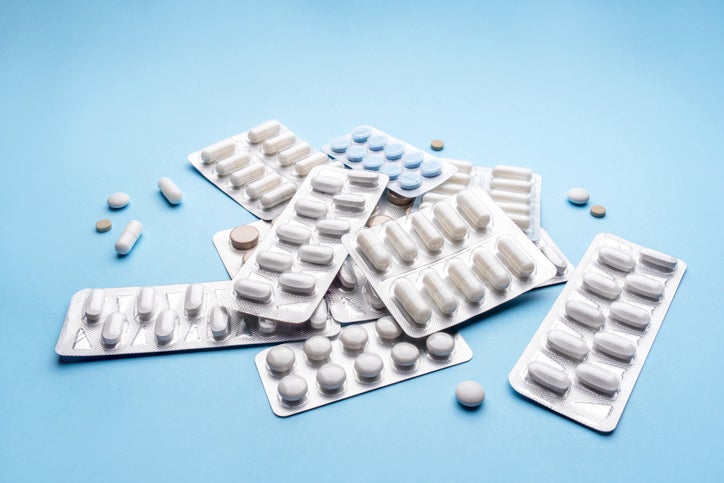
Adherence to statin therapy for patients with diabetes or cardiovascular disease is a significant challenge for both patients and providers. Studies suggest that adherence to statins is 30-64% and declines over time, making patient adherence of vital importance to recognize and address.1-2 The implications of poor adherence are weighty, including increased risk of cardiovascular disease, cardiovascular events, and mortality. 3-4 Cardiovascular disease is the leading cause of death in people with diabetes. These individuals are twice as likely to have a heart attack or stroke, and those who have already had a cardiovascular event are at a significantly higher risk of a second event. 5-7
There are numerous reasons for nonadherence to statins, including: fear of side effects, medication intolerances, preconceived beliefs about health conditions and medications, low health literacy, complex medication regimens, cost and access barriers, poor memory or mental health, and lack of follow-up.8 Patients can struggle with which information to trust when making decisions about medication treatment.9 There are many external influences, such as media sources, that can influence patients’ adherence. For instance, there was a brief rise in the number of people quitting statins following media coverage of the negative effects of the medication.10 The nocebo effect makes adherence even more difficult. Up to 27% of patients may perceive harm simply by acknowledging they have taken therapy; this number may grow to 28% with repeat dosing and even higher when patients are asked about adverse effects.11
Addressing these reasons for nonadherence and helping patients navigate the copious, ever-changing, and conflicting evidence is critical. Intensive patient-focused interventions, such as patient education, behavioral approaches, follow-up, medication therapy management, and reminders improve statin adherence. Pharmacists and pharmacy technicians can be leveraged by health care teams to help monitor adherence, educate patients on treatment rational and evidence-based benefits/risks, address barriers to statin nonadherence, and determine solutions to barriers. 8
Evidence suggests that educating patients about statins improves adherence rates and cholesterol treatment outcomes.12 When discussing statin risks and benefits with patients, the following data can be used as a resource:
- Statins prevent major cardiovascular events in 5% (500) of 10,000 patients treated for primary prevention and 10% (1000) of every 10,000 patients treated over 5 years for secondary prevention. 10
- Each 38 mg/dl drop in cholesterol with statins reduces the rate of major cardiovascular events by 25% each year taken. A 76 mg/dl drop reduces the rate by 45%.10
- In patients with diabetes, statins reduced major cardiovascular events by 21%. 11
- Most symptomatic side effects linked to statins are not actually caused by them. 13
- The overall risk of adverse effects from statins, the majority of which are reversible, is low. Over five years, the risk of myalgia is 0.5%-1%, myopathy 0.05%, diabetes 0.5-1%, and hemorrhagic stroke 0.05-0.1%. 9,13
- Lowering cholesterol rates (LCL) to below 40 ml/dl does not appear to increase risk of side effects. 14-15
Over time, data on the effectiveness and safety of statins and statin alternatives may change. Leverage the knowledge of your pharmacy team to assist with navigating this data as it evolves. To help achieve optimal patient outcomes, continue to collaborate with pharmacy to identify and address barriers to medication adherence.
About the Author

Charlene Williams, PharmD, BCACP, CDCES
Clinical Pharmacist Specialist at CHESS
References
1. Colantonio LD, Rosenson RS, Deng L, et al. Adherence to statin therapy among US adults between 2004-2014. J Am Heart Assoc. 2019;8(1):https://doi.org/10.1161/JAHA.118.010376
2. Hirsh BJ, Smilowitz NR, Rosenson RS, et al. Utilization of and adherence to guideline-recommended lipid-lowering therapy after acute coronary syndrome: opportunities for improvement. J Am Coll Cardiol. 2015;66(2):184-92.
3. Ramussen JN, Chong A, Alter DA. Relationship between adherence to evidence-based pharmacotherapy and long-term mortality after acute myocardial infarction. JAMA. 2007; 297(2):177-186.
4. DeVera MA, Bhole V, Burns LD, Lacaille D. Impact of statin adherence on cardiovascular disease and mortality outcomes: as systematic review. Br J Clin Pharmacol. 2014;78(4):684-698.
5. American Diabetes Association. Cardiovascular Disease. Diabetes Complications. https://diabetes.org/about-diabetes/complications/cardiovascular-disease#:~:text=Cardiovascular%20disease%20(CVD)%2C%20where,people%20with%20type%202%20diabetes.
6. Steen DL, Khan I, Andrade K, et al. Event rates and risk factors for recurrent cardiovascular events and mortality in a contemporary post acute coronary syndrome population representing 239234 patients during 2005-2018 in the United States. J Am Heart Assoc, 2022; 11(9): 022198. DOI: 10.1161/JAHA.121.022198
7.Steanick MI, Mackety S, Sheehan M, et al. Effects of diet and exericse in me and postmenopausal women with low levels of HDL cholesterol and high levels of LDL cholesterol. N Engl J Med. 1998; 339(10):12-20.
8. Alrais M. Improving statin adherence in patients at risk for cardiovascular disease. US Pharm. 2021; 46(2):6-12.
9. Kravitz RL, Bell RA. Media, messages, and medications: strategies to reconcile what they want, and what the need from medications. BMC Med Infom Dec Mak. 2013;13(Suppl 3):S5.
10. Impact of statin related media coverage on use of statins: interrupted time series analysis with UK primary care cata. BMJ. 2016; 353:i3283.
11. Olshansky B. Placebo and nocebo in cardiovascular health implications for healthcare, research, and the doctor-patient relationship. J Am Coll Cardiol. 2007; 49(4):415-21.
12. Yilmaz MB, Pinar M, Naharci I, Demirkan B, et al. Being well-informed about statin is associated with continuous adherence and reaching targets. Cardiovasc Drugs Ther. 2005;19(6):437-40.
13. Collins R, Reith C, Emberson J, et al. Interpenetration of the evidence for the efficacy and safety of statin therapy. Lancet. 2016;10059:2532-2561.
14. Marston NA, Giugliano RP, Park JG, et al. Cardiovascular benefit of lowering low density lipoprotein cholesterol below 40 mg/dl. Circulation. 2021;14(21): 1732-1734
15. Sabatine MS, Wiviott SD, Im KA. Efficacy and safety of further lowering of low-density lipoprotein cholesterol in patients starting with very low levels. JAMA Cardiol. 2018;3(9):823-828.

